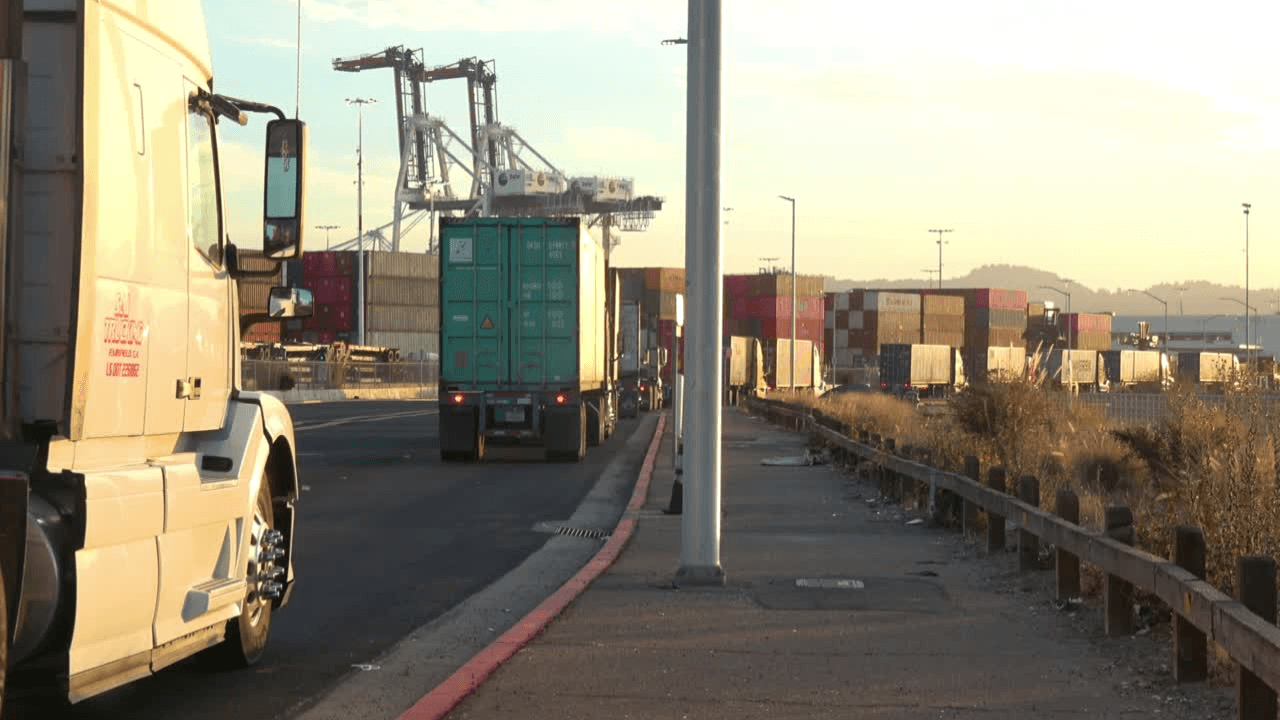
Poland's road exports in 2025: report, data, rates

Export bump - declines in classic directions
In March and April 2025. Poland experienced marked declines in the number of cargo offers on routes to countries that have been the foundation of our exports for years:
- To Italy: -17% in March, -21% in April
- To the Netherlands: three months in a row in the negative
- To the United Kingdom: -11%, -19%, -11% sequentially since February
The only breakouts in this trend? France as well as Germany, which showed a slight rebound in April. But note - only on the side of exports from those countries to Poland. What does this mean? More and more companies in Western Europe want to send cargo to Poland. And our carriers - they are not always able or willing to take them.
Bids rise, carriers fewer. Is pressure coming?
Data from the Trans.eu exchange indicates a potentially worrisome situation:
→ The number of bids is rising
→ The number of freight carrier searches is dropping or rippling
It's a conventional signal: capacity is starting to run out. However, not everybody is ready to see it.
- Principals are beginning to feel the shortage of transportation more and more acutely, and would be happy to tie themselves to contracts for longer, but on the old terms. Indeed, a sharp increase in rates is inevitable. Spot rates should grow more rapidly than contract rates. In an improving economy, we should return to a situation where they are higher than those we face in the contract market. This is due to both the nature of the spot market and the fact that the spot market is dominated by smaller players who find it difficult to match the larger companies in terms of cost optimization and resource efficiency. Therefore, from the point of view of contractors, carriers and freight forwarders, it seems that the sensible approach now would be to enter short-term contracts and avoid long-term commitments - Maciej Wronski, president of TLP, says in the report.
Rates: transporters still under the dash
Increases? Yes, but not everywhere. In April 2025, rates rose in many relations, especially from Western Europe to Poland (e.g., from the Netherlands +3.8%). But before that, for two months - they were falling. On top of that, from Poland to Italy, prices continue to fly downward.
What's more, domestic transport is not an asylum either. Despite an increase in the number of cargoes in March and April, rates have hardly moved. And after all, fewer transporters should in theory mean that prices are higher.
- Periodically there is a surplus of orders on cargo exchanges. However, from what I have observed after analyzing the financial performance of carriers, it does not guarantee even a minimum level of profitability. [...] I believe that some of the companies need to be scaled up to actual demand, with profitability and liquidity as an overriding criterion. - comments Dr. Pawel Trębicki, Rhenus Road Freight, Central East Region
Alternative directions? An illusion without a foundation
With declines on classic routes, one might look for hope in alternative destinations. Czech Republic, Slovakia, Romania, Turkey? Unfortunately - none of these markets has given two upward months in a row. Volatility dominates, stable orders as in short supply.
Polish carriers being pushed out of the market?
As eastern and western carriers take over freight, Polish companies are increasingly losing the cost battle. And it's not because they are weak - it's because they're... from Poland.
- The main problem for Polish carriers in international transport is beginning to be the increasing competition of carriers from other countries. [...] Labor costs in Romania, the Czech Republic or Lithuania are about 50% lower than in Poland. Which, for carriers, translates into about 20% lower total costs. [...] Today and in the near future, the companies that will win will be those that take a rational approach to contract tenders - those that don't take unenforceable tenders. CTo, by the way, has led to the collapse of many companies and the issuance of spot market tenders. The carriers that will win will be those that may do less turnover than they used to, but it will be profitable - Marek Chudy, Operations Manager, TSL Antkowiak, writes in the report.
What's next. Resilience rather than the delusion of growth
The market will not return to the “good past.” But carriers can win if they stop counting on mass and start building efficiency. Short-term contracting, flexible freight forwarding models, a conscious approach to tenders - these are not buzzwords. They are survival and growth tactics.
Download the report and see the data that shows what's going on!
📌 Detailed breakdowns from 20 routes
📌 Rates, searches, offers - month by month
📌 Expert industry commentary
📌 Simple conclusions and useful charts
👉 Download the report "TRANSPORT IN EUROPE. Trends | Data | Analysis"
Because it makes sense to act on facts, not conjecture.
Main graphic source: Canva.com